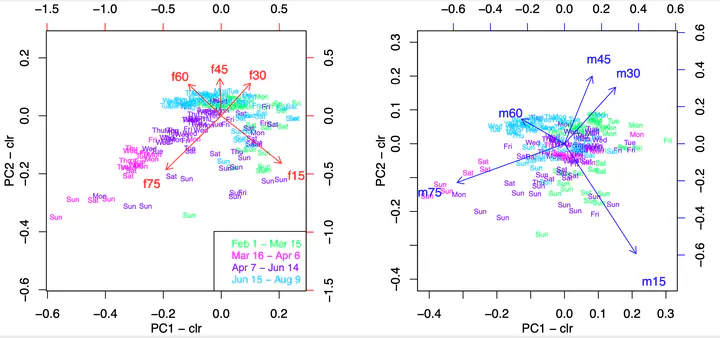The impact of COVID-19 on relative changes in aggregated mobility using mobile-phone data
 Biplots of the centered log ratio coefficients of the median radius of gyration values for females (left) and male (right) age groups. Green color for period before the lock-down, pink for lock-down period, purple after lock-down until mid of June, and light-blue after this period.
Biplots of the centered log ratio coefficients of the median radius of gyration values for females (left) and male (right) age groups. Green color for period before the lock-down, pink for lock-down period, purple after lock-down until mid of June, and light-blue after this period.Abstract
Evaluating relative changes leads to additional insights that would remain hidden when only evaluating absolute changes. We analyze a dataset describing the mobility of mobile phones in Austria before, during COVID-19 lock-down measures until recently.By applying compositional data analysis we show that formerly hidden information becomes available: we see that the elderly population groups increase relative mobility and that the younger groups, especially on weekends, also do not decrease their mobility as much as the others.
Type
Publication
Preprint: The impact of COVID-19 on relative changes in aggregated
Management summary
Mobility data from mobile phones are used to investigate mobility changes during Covid- 19 lock-down measures in Austria. Here we focus on relative changes between different sub-groups of the population by using the tools from compositional data analysis. This allows to gain much deeper insight into differences between the groups, and how these differences evolved over time.
Also take a look at the other publication anylzing absolute mobility behavior changes: Country-wide mobility changes observed using mobile phone data during COVID-19 pandemic